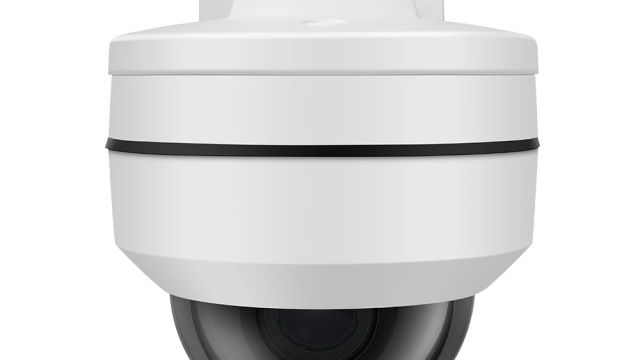Introduction:
Microcaptives, also known as small captive insurance companies, have gained significant attention in recent years as a powerful tool for business owners. These innovative insurance structures, authorized under the IRS 831(b) tax code, provide companies with the ability to take control of their risk management and potentially unlock various financial benefits. By forming a microcaptive, businesses can effectively establish their own insurance company, tailored to their specific needs and risks.
Captive insurance itself has long been utilized by larger corporations to mitigate risks that traditional insurance might not cover or address adequately. However, the introduction of the IRS 831(b) tax code provided a new opportunity for smaller businesses to follow suit and reap the potential rewards. By meeting the specific requirements outlined by the IRS, companies can take advantage of favorable tax treatment, ultimately enabling them to better allocate capital and protect themselves against potential losses.
Microcaptive
Understanding the power and potential of microcaptives is crucial for business owners seeking to optimize their risk management strategies. In this article, we will delve into the key elements of microcaptives, explore their advantages, discuss the IRS 831(b) tax code in more detail, and shed light on how these structures can contribute to the long-term financial health and resilience of business entities. But before we dive into the specifics, let us first grasp the fundamentals of captive insurance and its potential impact on businesses of all sizes.
Understanding Microcaptives
In the world of insurance, microcaptives are gaining attention for their unique power and potential. These entities, also known as 831b captives, operate under the provisions of the IRS 831(b) tax code. Microcaptives offer businesses an alternative method of managing their risks and obtaining coverage.
At their core, microcaptives are a form of captive insurance. Captive insurance involves the creation of a wholly-owned subsidiary that provides insurance coverage to its parent company or related entities. This enables businesses to have more control over their insurance programs and potentially reduce costs. Microcaptives, specifically those operating under the IRS 831(b) tax code, benefit from certain tax advantages.
The IRS 831(b) tax code allows qualified microcaptives to be taxed only on their investment income, rather than on their premiums. This tax advantage has made microcaptives an attractive option for businesses looking to optimize their insurance arrangements. By forming a microcaptive, businesses can potentially retain underwriting profits and build reserves to cover future claims.

In addition to the tax benefits, microcaptives also offer flexibility and customization in insurance programs. Companies can tailor coverage to their specific needs and mitigate risks that may not be adequately addressed by traditional insurance policies. This level of control and risk management potential makes microcaptives an intriguing option for many businesses.
As businesses explore the power and potential of microcaptives, it is crucial to navigate the regulatory landscape and ensure compliance with the IRS guidelines. Seeking professional guidance and expertise in setting up and managing a microcaptive is highly recommended to fully realize the benefits these entities offer.
The Benefits of Microcaptives
Microcaptives, also referred to as 831(b) captive insurance companies, offer numerous advantages for businesses looking to manage their risk effectively and potentially reduce tax burdens. These small, self-insurance entities have been gaining significant attention in recent years, especially with the introduction of the IRS 831(b) tax code. Below, we explore the key benefits that attract organizations to establish microcaptives.
Firstly, microcaptives enable businesses to tailor insurance coverage to their specific needs. Unlike traditional insurance companies, microcaptives allow companies to customize policies, deductibles, and coverage limits according to their unique risk profile. By retaining a portion of the risk themselves, businesses have greater control and flexibility over their insurance program, allowing them to align it closely with their strategic objectives.
Secondly, microcaptives provide a financial incentive to businesses through potential tax advantages. Under the IRS 831(b) tax code, microcaptives meeting certain criteria can elect to be taxed only on their investment income and not on their premium income. This reduced taxable income can result in significant savings for businesses, providing an avenue for them to allocate more funds towards growth initiatives or reinvestment.
Furthermore, microcaptives offer improved cash flow management for businesses. Instead of paying premiums to traditional insurance carriers, companies make premium payments to their own captive insurance company. If claims and losses are lower than expected, the surplus funds remain within the captive, allowing businesses to access the float and potentially earn investment income. This creates an opportunity to bolster cash reserves or reinvest the surplus for future growth, providing businesses with increased financial flexibility.
In conclusion, microcaptives offer a range of benefits for businesses seeking to manage their risk effectively and optimize their insurance programs. From customized coverage options to potential tax advantages and improved cash flow management, microcaptives present a powerful and flexible solution to addressing organizational risk in a tailored and cost-effective manner.
Navigating the IRS 831(b) Tax Code
When it comes to understanding the IRS 831(b) tax code, it is important to delve into the intricacies of this regulation to fully unravel the power and potential of microcaptives. This tax code provides a unique opportunity for small to mid-sized businesses to form their own captive insurance companies and enjoy the benefits that come alongside it.
At its core, a microcaptive is a form of captive insurance company that falls under the provisions of the IRS 831(b) tax code. This code allows a qualifying captive to receive certain tax advantages, ultimately leading to potential tax savings for the business. Under this tax provision, qualifying captives are able to be taxed only on their investment income, rather than their underwriting income.
To qualify for the IRS 831(b) tax code, certain criteria must be met. The microcaptive must be a bona fide insurance company, meaning it must primarily operate to provide insurance coverage for specific risks faced by the business. Additionally, the annual premium received by the captive must not exceed $2.3 million for the taxable year.
By taking advantage of the IRS 831(b) tax code, businesses can gain greater control over their insurance coverage and potentially experience cost savings through tax advantages. However, it is crucial to navigate this tax code with care and ensure strict compliance to avoid any potential scrutiny from the IRS.
In conclusion, understanding and effectively navigating the IRS 831(b) tax code is paramount for businesses looking to unlock the power and potential of microcaptives. By meeting the qualifying criteria and complying with the regulations set forth by the IRS, businesses can harness the advantages offered under this tax code and create a captive insurance company that suits their specific needs.


